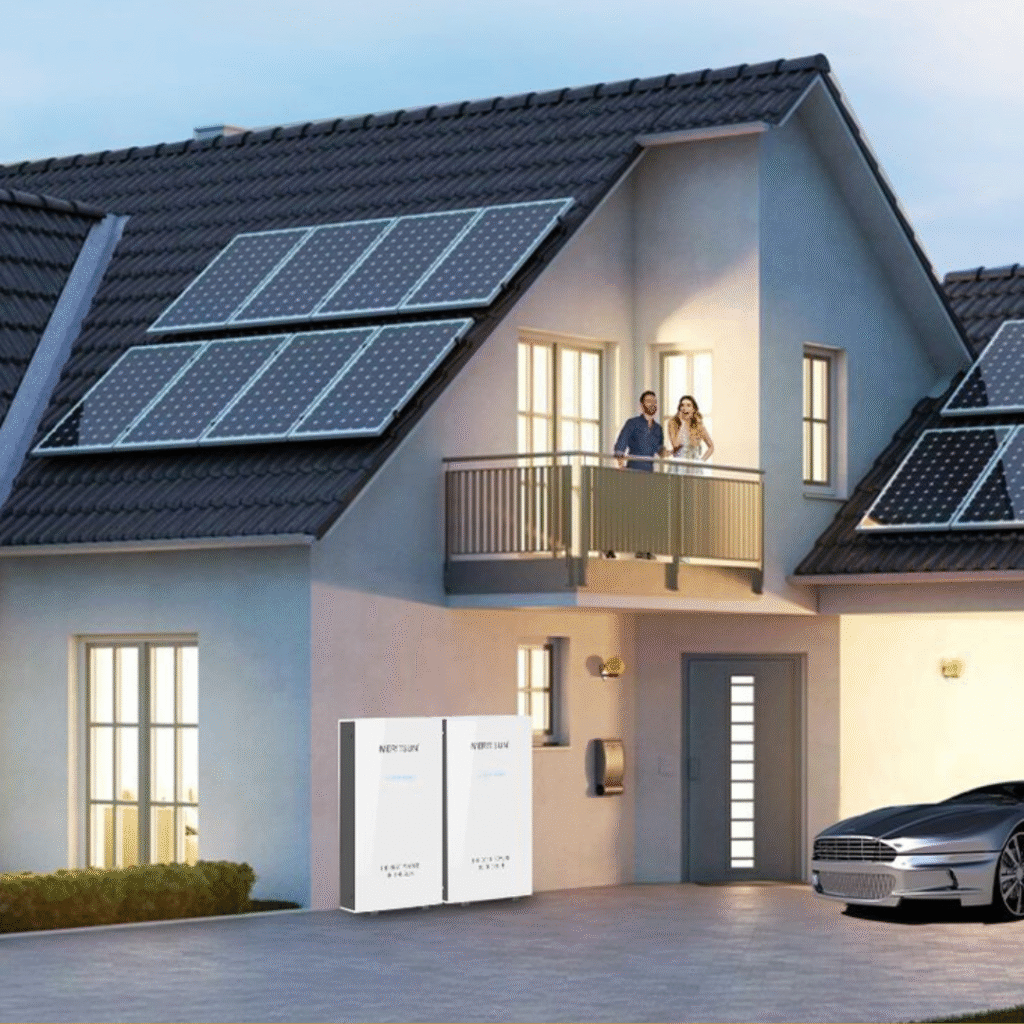Table of Contents
- 1. Is Solax the Right Home Battery Option for Budget Focused Solar Owners?
- 2. Quick Pros & Cons
- 3. Performance Matrix: How Solax Batteries Compare
- 4. Who Should Buy a Solax Battery?
- 5. About Solax
- 6. Solax Battery Model Range (2025)
- 7. Key Technical Specifications
- 8. Expanded Pros & Cons
- 9. Support & Warranty
- 10. Ask Us Anything
- 11. Downloadable Documents
- 12. Final Verdict: Should You Buy a Solax Battery in 2025?
Is Solax the Right Home Battery Option for Budget Focused Solar Owners?

Quick Pros & Cons
Pros
- Wide range of CEC-approved models from 5.1 kWh to 47.9 kWh usable
- Modular and scalable design, suitable for both single and three-phase homes
- Compatible with Solax hybrid inverters
- Competitive pricing for most capacity sizes
- 10-year product warranty using LiFePO₄ battery chemistry
Cons
- Limited compatibility with non-Solax inverter brands
- Mixed customer feedback on app performance and firmware reliability
- Historical battery recall has raised some concerns in the market
- Not currently integrated with major Virtual Power Plant (VPP) programs
- Support quality and service times can vary depending on installer

Performance Matrix: How Solax Batteries Compare
Technical Performance
Summary:
Solax batteries deliver solid flexibility and capacity options, but fall behind in peak performance and third-party compatibility.
User Experience
Summary:
Easy to configure with Solax inverters, but app usability and customer sentiment vary depending on model and installer.
Trust & Support
Summary:
Strong on price and local recognition, but weaker when it comes to long-term support and battery-specific reputation.
Overall Score
68%
Solax batteries fall below our recommended threshold of 70%. They may still suit homeowners looking for a budget-friendly option that integrates easily with a Solax inverter setup.
Get Upto 3 Quotes
Compare Battery prices from trusted installers and save thousands on your energy storage system
Who Should Buy a Solax Battery?
- Compatibility with other inverter brands
- Participation in Virtual Power Plants (VPPs)
- A polished mobile app or advanced smart energy features
About Solax
Solax Battery Model Range (2025)
1. Triple Power T-BAT H V2 Series
- Usable capacities: 5.1 kWh, 10.4 kWh, 15.5 kWh, 20.7 kWh
- Modular master/slave setup
- Designed for use with Solax hybrid inverters (X1 and X3 series)
- IP65 rated for outdoor installation
2. T-BAT SYS HV-S3.6 (HS Series)
- Usable capacities: 6.5 kWh to 43.1 kWh
- Stackable high-voltage modules (typically 3.3–3.6 kWh each)
- Suits large homes or small commercial applications
- Requires compatible battery management system
3. T-BAT HS50E Series (Newer High-Voltage Range)
- Usable capacities: 4.6 kWh to 27.6 kWh
- Updated design with simplified wiring and improved thermal protection
- Compact footprint for wall or floor mounting
- Designed for higher safety and easier installation
Each of these series is CEC-approved and listed for use in Australia through to at least 2026 or 2027.

Key Technical Specifications
| Specification | Details |
|---|---|
| Battery Chemistry | Lithium Iron Phosphate (LiFePO4) |
| Usable Capacity Range | 4.6 kWh to 47.9 kWh (model dependent) |
| Depth of Discharge (DOD) | 90% |
| Cycle Life | >6000 cycles |
| Round-Trip Efficiency | Up to 95% |
| Peak Power Output | Up to 16.1 kW (on larger stacked models) |
| Scalability | Modular stacking with Master/Slave or parallel box |
| Ingress Protection | IP65 (outdoor rated) |
| Operating Temperature | -10°C to 55°C (varies slightly by model) |
| Communication Interfaces | RS485, CAN |
| Warranty | 10 years (or energy throughput, whichever comes first) |
| Inverter Compatibility | Solax hybrid inverters (X1, X3 series) |
These specifications may vary slightly depending on the model and system size. Always consult the product datasheet and installer for final system design.
Expanded Pros & Cons
What We Like
- Modular, scalable design
Solax batteries can be expanded from small single-module setups to large 40+ kWh stacks, making them suitable for a wide range of homes and energy usage profiles.
- CEC-approved and outdoor rated
- Compatible with Solax inverters
- LiFePO₄ chemistry and strong cycle life
- Budget-friendly options
What Concerns Us
- Limited third-party inverter support
- No current VPP participation
- Mixed user feedback on app and software
- Past product recall
- Support varies by installer
Get Upto 3 Quotes
Compare Battery prices from trusted installers and save thousands on your energy storage system
Support & Warranty
Warranty Coverage
- 10 years from date of installation
- Minimum of 70% retained capacity at end of warranty period (model dependent)
- Applies to residential use under normal operating conditions
We Have Great Answers
Ask Us Anything
Final Verdict: Should You Buy a Solax Battery in 2025?
Overall Score: 69%
Solax may be suitable for price-sensitive households using Solax inverters, but we do not consider it a recommended system for most Australian homes.


